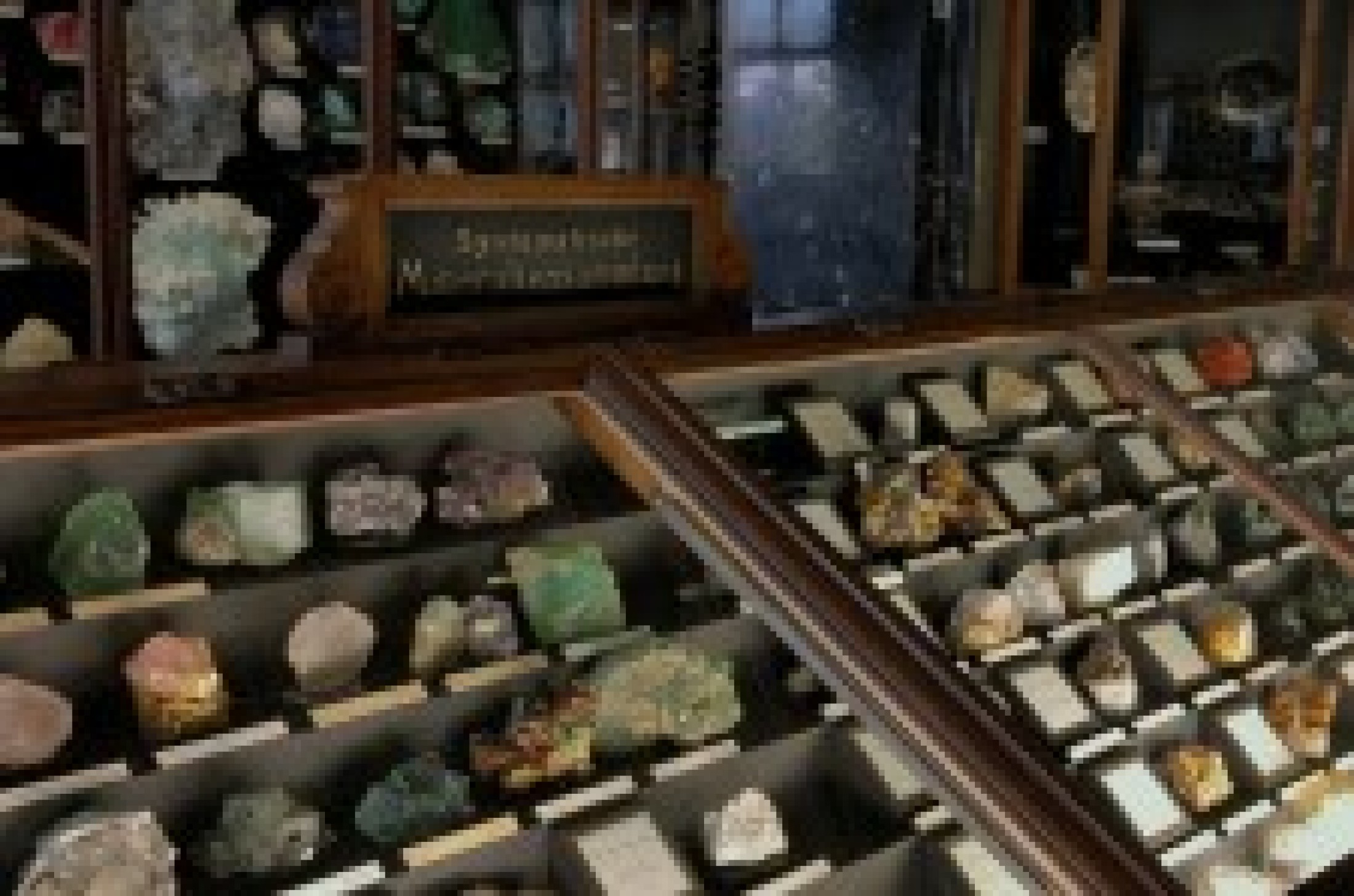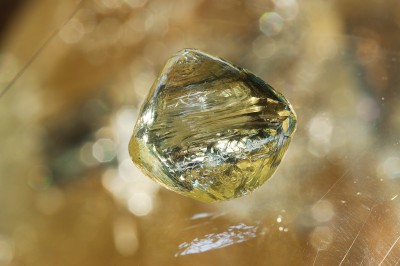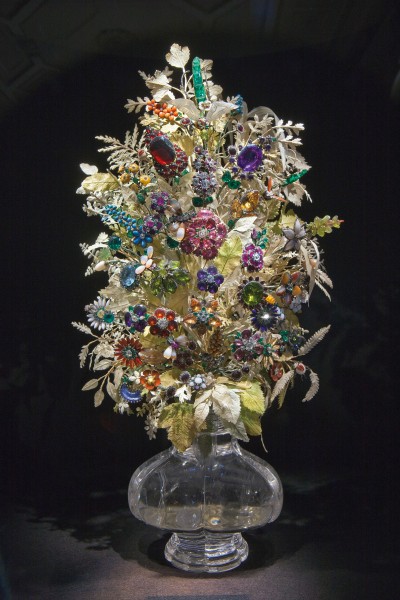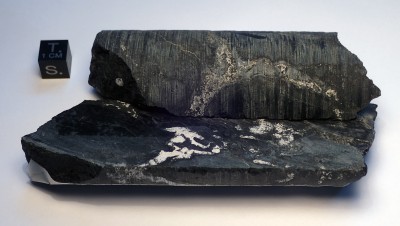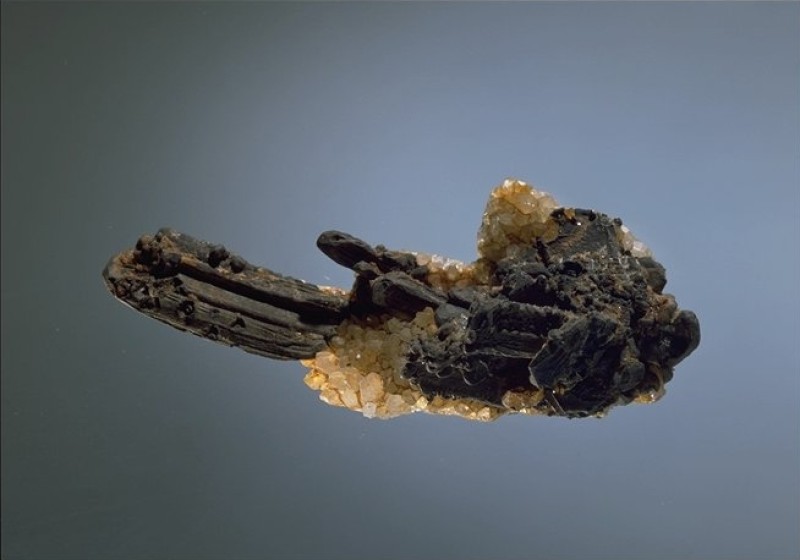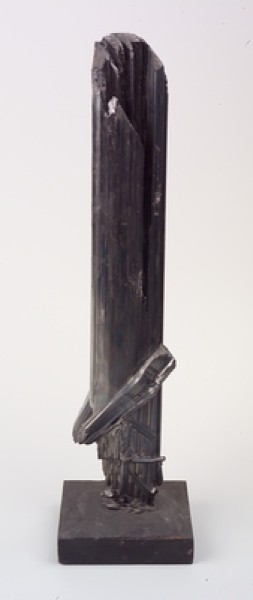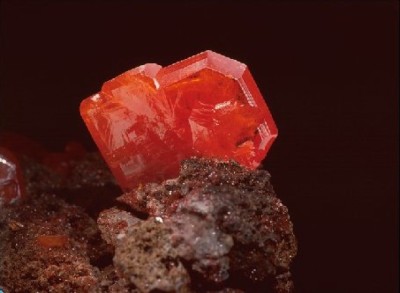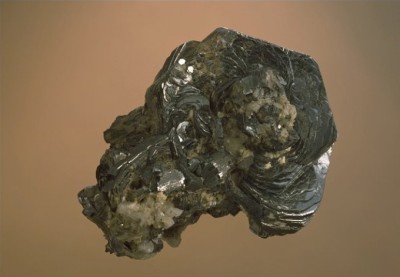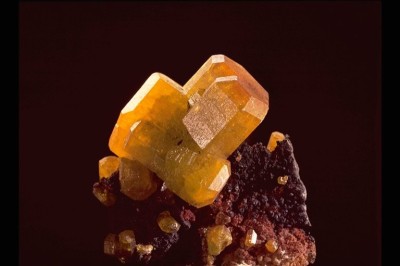
Hall 1 - Mineral systematics: Elements, sulphides, sulphosalts
Special exhibition: "Evolution of minerals"
Since April 5, 2017, this exciting concept is part of the permanent exhibit at the Natural History Museum Vienna: objects that document the development of Earth in connection with 56 minerals illustrate the evolution of minerals in Hall 1.

Special exhibition: "Building and decorative stones"
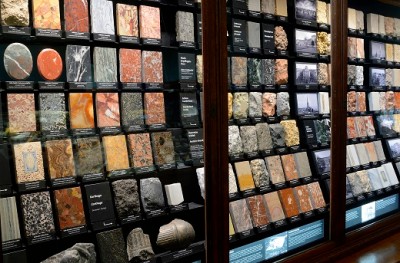
Besides the decorative stones, which were used for interior and exterior decoration of buildings, the collection also contains artificial products such as stucco and tiles. Further important building materials like bricks and gravel are also documented.
Of the approximately 20,000 objects contained in the collection, only 500 were previously shown in nine large display cases. Having remained almost unchanged for the past 125 years, this exhibition no longer met modern standards of knowledge transfer and presentation. A decision was therefore taken to create a new permanent exhibition.
This new concept showcases samples of the stones used to decorate the interior and exterior of buildings and monuments in Vienna, with a particular focus placed on the buildings located along the city’s famous Ring Road.
Also on display are stone samples from important buildings and monuments in the rest of Austria and throughout the world. The original historical display cases have been modernized and equipped with LED lighting.
When drawing up the concept for this new exhibition, special attention was paid to the teaching material, information texts, and visual depictions of relevant buildings.
On display since 11 March 2015, the exhibition provided an additional highlight for the 150th anniversary of the beautiful Vienna Ring Road.
New permanent exhibition "World of Crystals"
In June 2023, a new permanent exhibition 'World of Crystals' was opened and was immediately very popular with visitors, especially young ones.
The curator of the exhibition, Vera M. F. Hammer, together with architect Rudolf Lamprecht and the media technology team from 7reasons, realized the design of the showcases. The ever-changing geological history of the earth has formed almost all chemical elements into various minerals over time. Their systematic classification is based on chemical composition and crystal symmetry. With their symmetry and colorful beauty, crystals have always captivated people. The exhibition can be seen as a journey through crystals, showcasing some optical phenomena as well as the regular shapes and their diversity. The growth of crystals and their technical applications will also be displayed through typical examples. Today, synthetic crystals of silicon carbide for electronic components, various carbon modifications, and laser crystals play an important role.
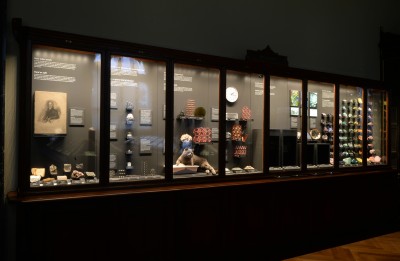
This hall contains large mineral samples (in a glass cabinet in the middle of the room), a collection of building materials (samples) and the first part of the systematic mineral exhibit (continued in Halls 2-4).
The covering of the heating stoves preserved in their original state is of historical interest. They are situated in the two corners of the room away from the windows. (In times gone by, all the rooms of the Museum were heated by warm water stoves, which were appropriately covered. These are the two sole remaining stove covers).
The paintings on the walls depict the salt mines in Wieliczka (Hugo Charlemont), the diamond works in Kimberley (Othmar Brioschi), the Calvary Hill in the Adelsberger Grotte (Carl Hasch), gold mining in the Sierra Nevada in California (Wilhelm Bernatzik), and the lead mine in Raibl (Eduard v. Lichtenfels).
The systematized mineral collection (minerals classified according to their chemical composition and crystal structure; the classification is based on the internationally valid Ramdohr-Strunz and Strunz system) begins with the first table cabinet.
Particularly noteworthy in the mineral system (elements, sulphides and related chemical compounds) are the following:
Pieces of native silver from Joachimsthal (I/2); native gold from Eule (I/5); landsbergite from Moschellandsberg (I/8); sylvanite from Offenbanya (I/17); tetradymite from Ankogel (I/18); argentite from Joachimsthal (I/21 and 22); hessite from Botes (I/24), bornite from Froßnitz (I/24), millerite from Breitenau (I/63); sternbergite from Joachimstal (I/63); galenite from Gonderbach and Neudorf (I/66); stephanite (I/77); freieslebenite from Hiendelaencina (I/81); lorandite from Allchar (I/84), and hauerite from Kalinka and Raddusa (I/86).
Of particular note in Hall 1 is the halite sample from Wieliczka, displayed in the central cabinet, which is considered to be one of the best of its kind. Also on display in the central cabinet is a smoky quartz weighing 115 kg which was discovered in the Tiefen glacier, Switzerland, in 1868. It is one of the heaviest samples ever unearthed there. The Eisenblüte ("iron flower") from the Styrian Erzberg is considered to be one of the best examples of this type of mineral. Further, the calcite from Iceland ("Iceland spar") is probably one of the largest from this deposit in the possession of a museum.

